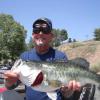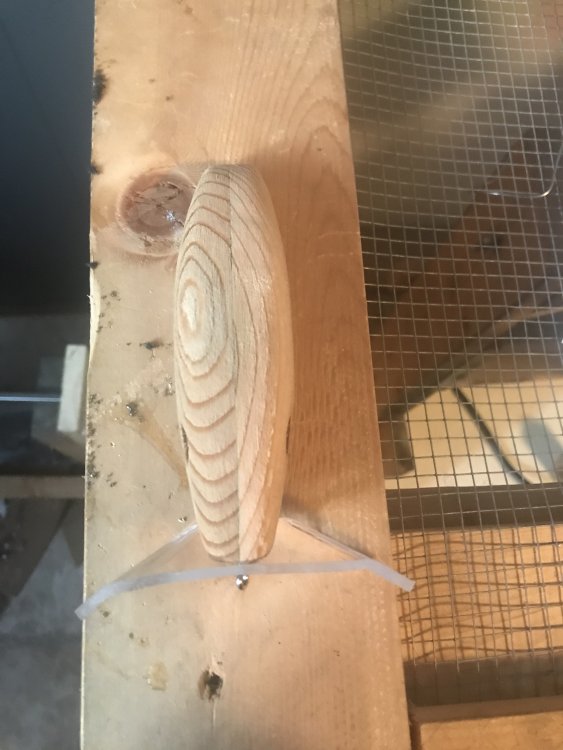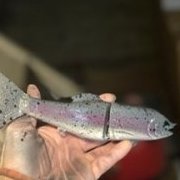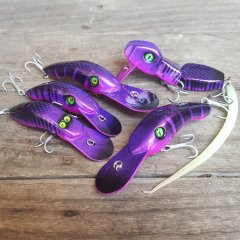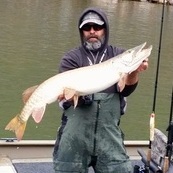Leaderboard
-
in all areas
- All areas
- Images
- Image Comments
- Image Reviews
- Albums
- Album Comments
- Album Reviews
- Topics
- Posts
- Stories
- Story Comments
- Story Reviews
- Classified Ads
- Classified Ad Comments
- Classified Ad Reviews
- Records
- Record Comments
- Record Reviews
- Websites
- Website Comments
- Website Reviews
- Status Updates
- Status Replies
-
Custom Date
-
All time
February 2 2011 - April 24 2024
-
Year
April 24 2023 - April 24 2024
-
Month
March 24 2024 - April 24 2024
-
Week
April 17 2024 - April 24 2024
-
Today
April 24 2024
-
Custom Date
01/12/2020 - 01/12/2020
-
All time
Popular Content
Showing content with the highest reputation on 01/12/2020 in all areas
-
Nothing permanent. I used a fine black Sharpie to draw detail lines on the lighter color fins. You may have to go over the same line twice to get the ink to show. Sometimes certain ball point pens can write on it. Pens seem completely random as to whether they can put ink on the mat. The ink will last maybe an hour or two of casting. It wears off quick. I have let ink dry on a fin for over a week. When I touch it, it still wipes away. Touching it with your fingers will wipe off any ink. I have tried several paints they just wipe off. I tried standing on a window screen over the mat to impart the grid pattern. Got no results. I have thought heating a .040 or .051 stainless shaft wire with a plumbing torch to sear marks on it for detail lines. Haven't tried that yet. The mats have a high temp tolerance don't know if it will work.2 points
-
I have an Arbogast musky jitterbug, the Jitterbug XL. I put it in a pan filled with water. It sits slightly nose down. The body is approximately a 1" diameter near the head. It does not start to narrow much until the last third of the body. It tapers down to around 3/8" at the end. It is 4 and 1/2" long. It does not feel like any weight is in the body. It might have a small belly or tail weight but I couldn't tell. It does have two trebles mounted mid-bait, one on each side which may negate the need for weight. It just looks like the wider body up front offsets the weight of the metal lip. I made a creeper type lure inspired by Dieter. It's like a bigger version of the Pompadour without the tail spinner. I bought the large creeper wings from LPO. Dieter's creeper is a work of art. He has some still shots in his video of the lure before it is painted showing the design: https://www.youtube.com/watch?v=9H3hQGIWwAg I have caught a couple of largemouth and 1 pike on my creeper so far, nothing big. It looks like a tiny person swimming. I have tried to make my own multi-section jitterbug type lure with a lexan lip, but it did not work. It only has a slight wobble when it sits close to flat. Still experimenting with different lip shapes and angles. I use a heat gun and sheet metal bending pliers to bend the lexan. I think my bait at 9" may be too long for a jitterburg type lip. I have also made a globe type lure. It's not really a paddler, more of a churner, sort of like a boat propellor, but it makes a heck of racket on surface. It's more of an old-school type lure, overlooked in the current whopper plopper era. It has a different action with the churning in the front 1/4 of the bait. My lure does work action-wise, but no fish yet. I used a piece of lexan to make blade/wing part. The original used metal. I thought the globe was much easier to make than a jittergbug type lure.2 points
-
When I make my baits, they are usually one-offs. I needed a way to easily make fins of different shape, sizes and colors. It would be great I someone could figure out how to make details on those mats. Everything just wipes off them. I have thought of heating stiff wire to try to brand detail lines on them, but haven't tried it yet. Most of the baits I make are large baits - 6" to 12". The fins on the some these baits are close to 2" in height. I usually have a hook that overlaps the start of the tail fin, sometimes touching the slope of the bottom of the tail fin. Sometimes the bottom tip of the fin hangs below the level of tail hook. I was worried if I used a stiff material that a fish could not close its mouth and get the hook. I probably overthought it. I am using ST-35s, ST-36s, and KVD elite triple grips in sizes 1 to 3/0. Those hooks will probably hook anything. Having a fin that folds down can't hurt. On big baits, I find I get a lot of head shots with fish hooked on the front hook anyways. It's always impresses me when a 2 lb. bass attacks a 9" lure.2 points
-
They were generic-type Chinese made. I bought one silicone baking mat at Dollar General. It was reddish-brown. It was thick, 3/16". Its was $4 and was 18 inch x 12 inch. That has been the thickest I have found. The rest of the mats I have I bought off random Ebay sellers, usually any where from $1.75 to $4 each.. There are alot of sellers- different sizes and colors, some have textures. Most are 1 mm thick. https://www.ebay.com/itm/Heat-Resistant-Silicone-Kitchen-Baking-Liner-Pad-Bakeware-Non-stick-Table-Mat/232812893544?hash=item3634bad568:m:mLK9IbwZTsBIHF6HL2bVEqA https://www.ebay.com/itm/Silicone-Pot-Holders-Non-Slip-Square-Mats-Trivet-Heat-Resistant-Select-Color/291672376880?hash=item43e9074630:m:mbbusx7R-1k9n2zjX8hF1bQ https://www.ebay.com/itm/Rectangle-Heat-Resistant-Mat-Silicone-Non-slip-Trivet-Pot-Pan-Holder-Pad-Kitchen/143452095807?hash=item216669453f:m:mIxHvPRINFEDpph1265Kbww https://www.ebay.com/itm/Silicone-Baking-Liner-Oven-Heat-Insulation-Pad-Bakeware-Non-stick-Pad-Table-Mat/253670401246?hash=item3b0fef24de:m:maJ3gBnPkR2oH6hWNQPU3Nw I have not tried any of the textured mats. I have been using the regular smooth mats (1 mm thick) for a few years. I haven't lost a fin yet. Even if I did, each mat will make a few dozen fins. I have one bait with maybe 20 fish on it and the fin is still in good shape. If I am not lazy I will make a template of the fin shape I want out of thin wood or hard plastic. Then I can just trace around the template with a razor knife to make a nice clean edge. I may even pre-punch the 2 holes in the fin with a metal tube. Most of the time, I just find a pen that will write on the mat, draw the fin and cut it out with scissors. It helps to keep the mat deep into the scissors. The ink wipes off with a paper towel. Then I just push the brads through the fin and use a razor knife to center the fin in the notch to make sure the brads went through. I use steel brads (usually sz 18 x 3/4") to pin the fin in the tail notch in the lure body. Cut the brads to length with side cutter pliers or mini-bolt cutters. I use a tooth pick or unfolded paper clip to put a tiny drop of super glue on the head of the brad where they sit in the hole in the lure body.2 points
-
Slapped together this wing and put it on the rough body with hooks for a bath tub test and it paddles . unfortunately open water is limited with -20C and colder weather so may be a while before I can do a good test I think with a little messing around testing a few styles of wing and body shapes I will get what I am looking for. I will add in a joint for sure1 point
-
1 point
-
I got them in a #5 and #4 to make a double royal bait. I made it 1/2oz with .035" wire and it had so much torque even a slow retrieve couldn't keep it from rolling over. I since then used that #5 blade for a single blade bait and it thumps so hard it makes .035" wire feel like I'm running .029". They also spin at a ridiculously low speed so if you want a thumping blade that is the one to get.1 point
-
I got the idea from that. I ordered a pack of Nose Jobs from TW to try. Shortly, after I received them I was in the hardware store in the picture hanging hardware aisle. Saw a big 3" diameter suction cup hanger and had deja vu.1 point
-
I made my jitterbug type lure with the Murray cod type lip. I haven't figured out a good way to make uniform curves in lexan. I might just have to get some heavy gloves and bend heated lexan around a pipe. I did try a cupped lip on my bait by using a big suction cup hanger and carving it into a jitterbug shape. One of these things: I took off the metal hook, carved some off the top and bottom into jitterbug-lip shape with a razor knife, drilled a hole through the center and mounted it to the bait with an eye screw. This did give my bait some action. I get some action at the head of the lure. The action gets less going back. The tail section doesn't move at all. I think your on the right path with your lure size and one joint. I should have started there or even just a non-jointed one at first to get the lip size to body ratio correct.1 point
-
That spinnerbait in Hank Parker's video looks like the one Blades was making. I know Blades and Parker are friends and have fished together and Blades was looking for him to endorse that spinnerbait. Maybe Blades will see this and chime in. As far as the "classic", I think that wire was an .028. I make a spinnerbait on .028 and the vibration is incredible and it is a fish catching machine! There is a down side to light wire: Every fish will tear up the lure and need to be re-formed by hand or put a small bender in ur boat. Eventually the vibration will cause the "R" bend to break. Most store bought spinnerbaits are on .035 so they don't bend or break....... but light wire catches more fish!!1 point
-
@JD_mudbug My plan is a single joint Lexan wing bait between 5-6” to start and if I like the results make a larger one. You mentioned you have be working on a large multi bait version jitterbug. Are you going with a cupped jitterbug style wing or more like the wing style used on Murray cod paddlers?. The Cod paddlers are common in multiple joints and large so definitely worth looking at if you have not all ready That crawler is definitely interesting and may have to attempt one in the future1 point
-
Lakeland has a blade called a Royal blade or Royal Willow blade. I think they have more thump than a Colorado or Mag willow. https://barlowstackle.com/Royal-Willow-Spinner-Blades-P1956/1 point
-
Just wanted to say thank you to everyone that has posted on here with ideas and proven ways that have helped them. I started making lures a couple months ago and have been doing it pretty much on my own trying to find new ways of making them. I’m super stoked about this community and can’t wait to pass on some of the info you guys have given me to others in the future1 point
-
I agree with DaBehr on the the colorado blades, especially the Hildebrandt colorados. That brand of colorado blade seems to thump the most. I also like the wide willow blade. It thumps a little bit less than a colorado but gives off more flash and casts a bit better. They are sometimes called mag willow, turtle back, cascade, or olympic blade. Terminator calls their version of it, the Oklahoma blade. Lure Parts Online sells them too. https://www.lurepartsonline.com/Lure-Making/Shop-By-Product-Category/Spinner-Blades-Spoons/Spinner-Blades/Wide-Willowleaf-Blades?page=11 point
-
You're welcome. The thanks really go to Dieter. The wings on Dieter's creeper are amazing. A lot of work went into those. I haven't seen him post anything recently. I find myself re-watching his old videos for motivation to make a new lure.1 point
-
Mark, You're welcome, btw. I forgot to put that in the last post. I lurked on this site for a while before joining. I usually don't make multiples of a particular bait. So, I never felt 'expert' enough to contribute to the site. It's a good feeling when I can.1 point
-
Thump = Colorado blades. If you want a "good thump" and but want to fish them deeper at a good speed, go with an Indiana Blade. Here is a link to a really good article on the subject: http://www.bassdozer.com/articles/spinnerbait-blades.shtml I really like HILDEBRANDT blades and I get mine at Barlow's Tackle. They ship international.1 point
-
A little solder on the inside of the tip of a Colorado blade can make a thump.1 point
-
That really made my day, got a big hucho on a homemade floating mouse. Must make some more1 point
-
I've found that even the $25 Japanese jerkbaits, which are supposed to suspend, actually sink or rise slowly, depending on water temp, and line type and size, but not fast enough to matter. I've also found it's impossible for me to get a lure to suspend perfectly, so I settle for close. I get it to float really slowly, then paint it and top coat it, and hope the paint/top coat make it suspend in cold tap water in my float testing 5 gallon bucket. Then I can use the type and size of line, and the size of both split rings and treble hooks, to get them to either sink slowly, or float slowly. Worst case scenario, if the lure still floats once I'm finished making and rigging it, I'll add suspend dots/strips to the belly, or a little lead wire to the belly hook shank. But I don't think the fish care if it sinks or rises, as long as it is a really slow movement. Dying baitfish aren't neutrally buoyant, either.1 point
-
I don't think what the tail's made from has much influence on hooking a fish, or keeping it hooked. I've used tails from clear margarine tubs for years, sanded to add fin lines and colored with sharpies, and they don't seem to hinder the fish getting the bait. Most fish attack from the bottom or side, and a fish that's big enough to eat a bait from the rear will be big enough to swallow the tail whole. I do think the idea of a colored silicone place mat tail is interesting. I will be checking this out.1 point
-
1 point
-
If you wash the baits in warm soapy (dish washing liquid) water and dry them off good prior to painting you will likely get better adhesion. It depends on the plastic that you are using as well. I have some 4 oz bottles with the flip top from lureworks. I thought about using them but was concerned with the solvents in the paint doing something to the bottle or the solvents evaporating from the paint while in the bottle. Are you using these or something similar? If so, have you had any of these problems.1 point


